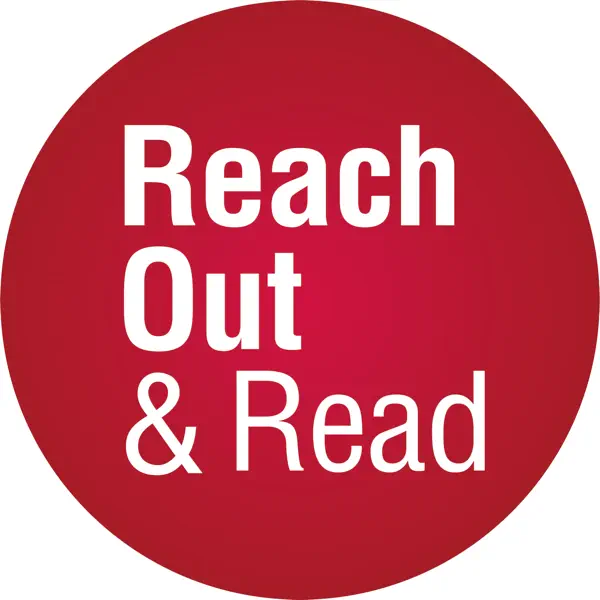Reach Out and Read

As a national nonprofit organization that promotes early literacy by integrating books into pediatric care, they've been doing this vital work since 1989, now partnering with over 6,000 clinics across all 50 U.S. states.
My favorite episode features my beloved children's book author: Leo Lionni. The conversation with his granddaughter, Annie Lionni, revealed a story that transformed how I understand his work—and perhaps all art born from suppression.
The Train Ride That Started Everything (Or Did It?)
The origin story of Leo Lionni's children's book career is charming: On a train ride from Manhattan to Greenwich with his two young grandchildren—three-year-old Annie and five-year-old Pippo—he entertained their restlessness by tearing pages from a Life magazine into blue and yellow shapes. Through this impromptu storytelling, Little Blue and Little Yellow were born. That same evening, after dinner with publisher friend McDowell Obolensky, the book was quickly picked up for publication.
But as Annie Lionni reveals in the podcast, this was "the unimportant story." What matters is the timing: this happened just six months after the traumatic shutdown of his "Unfinished Business" pavilion.
The Real Story: Unfinished Business
In 1958, Leo Lionni—then the successful art director at Fortune magazine—designed the "Unfinished Business" pavilion for the Brussels World's Fair. Working with the State Department and Henry Luce, Lionni created a bold installation that addressed America's most pressing challenges: urban decay, environmental degradation, and most controversially, racial segregation.
The pavilion featured three linked, raised structures representing America's journey from a chaotic past through a brighter present toward an orderly, utopian future. Among its displays was a photograph that would prove prophetic: seven racially diverse children playing Ring Around the Rosie—an image of the integrated America that Lionni envisioned.
The Shutdown
The pavilion was well-received by international visitors who appreciated America's honest self-reflection. But back home, Southern senators erupted. Georgia's Senator Herman Talmadge and South Carolina's Senator Strom Thurmond led the opposition, with Talmadge telegraphing that the exhibit showed "in the worst possible light those states and regions of our country in which segregated society has proved to be in the best interests of all races concerned."
Within weeks of opening, "Unfinished Business" was shut down. The official reason—bad design—contradicted the positive visitor surveys. Lionni was made the scapegoat for what was clearly a political decision.
From Suppression to Liberation
Annie Lionni's revelation in the podcast is stunning: "Leo never said this, but I think all of his children's books came from the shutting down of the pavilion."
Consider the timeline: Just six months after the pavilion's closure, on that train ride with his grandchildren, Lionni spontaneously created Little Blue and Little Yellow. Look at its pages—seven differently colored dots playing Ring Around the Rosie, eerily similar to that photograph from Brussels. When blue and yellow embrace and their colors merge, their families reject them, unable (or unwilling) to recognize them anymore.
The speed of this transformation is breathtaking. In the spring of 1958, Lionni watched politicians shut down his vision of an integrated America. By that fall, he had found a new way to tell the same story.
As Annie reflected, "Leo recognized that the audience he most wanted to write for was the audience who would make the future." Unable to reach adults about tolerance and integration, he turned to children.
A Legacy of "Finishing Business"
Lionni went on to create more than 40 children's books, four winning Caldecott Honors. His stories consistently explored themes of community, tolerance, and maintaining oneself in the face of pressure. In The Alphabet Tree, letters band together to spell "PEACE ON EARTH AND GOODWILL TOWARD ALL MEN." In Swimmy, small fish unite to overcome a larger threat. In Frederick, a dreamy mouse's poetry sustains his community through winter.
The censorship didn't end with Brussels. As recently as 2015, the mayor of Venice banned several Lionni titles, including Little Blue and Little Yellow, for "potentially threatening traditional families." These books about community, tolerance, and ingenuity remain as timeless as the problems they address.
The Power of Pivoting Purpose
What strikes me most about Lionni's story is how he transformed censorship into creativity. Blocked from addressing adults about America's "unfinished business," he found a more powerful avenue: speaking directly to the generation that would inherit the future.
His granddaughter's words resonate: "My brother and I have often told that story [about the train ride], but the important story is that the book came out just after the exhibit was closed down."
Sometimes our greatest contributions come not from our original plans, but from how we respond when those plans are thwarted. Lionni couldn't finish his business at the World's Fair, but through his books, he's been finishing it ever since—one young reader at a time.
To learn more about Reach Out and Read and their vital work promoting early literacy through pediatric care, visit their website. And if you haven't yet introduced a child to Leo Lionni's timeless stories, perhaps start with Little Blue and Little Yellow—now that you know the real story behind it. But honestly, any of his books is worth it!
